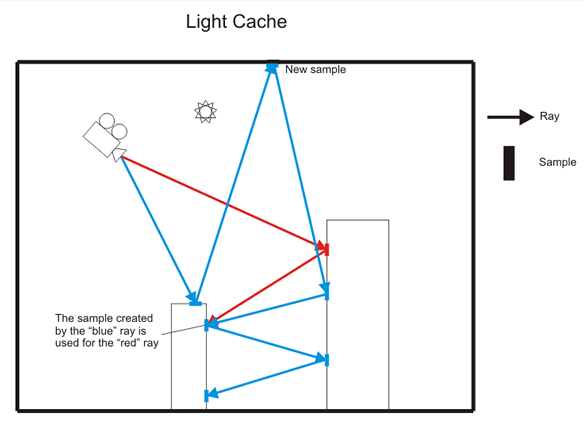Page Contents
Overview
Light caching (sometimes also called light mapping) is a technique for quickly approximating the global illumination in a scene. The light cache is built by tracing many, many eye paths from the camera. Each of the bounces in the path stores the illumination from the rest of the path into a three-dimensional structure. This method was developed by Chaos Group specifically for the V-Ray renderer.
The diagram on the right shows the way the light cache is generated. To get the lighting from the environment, V-Ray traces many rays from the camera into the scene. Each bounce of light creates a sample in the light cache that can be used during the rendering. If one ray hits a sample that was created by another ray, the computation process stops and the information from the sample is read instead. The ability to detect and read light information created by other rays (instead of computing new information) speeds up the light caching process a great deal.
Light Cache Settings
For more information about the Light Cache render Settings in V-Ray, please see the Light Cache Settings page within this documentation.


